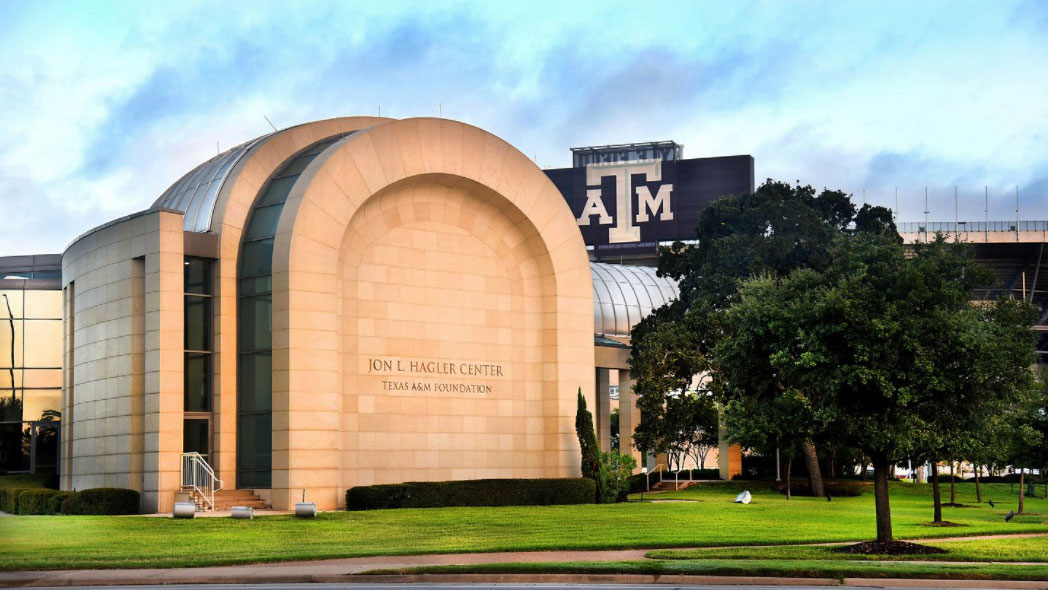
As the sun sets over the Texas A&M University campus, senior Shubh Mamtora '24 can often be found navigating the corridors of his academic home base, the Department of Geography, located primarily on the eighth floor of the Eller Oceanography and Meteorology (O&M) Building. Here, Mamtora immerses himself in the world of his chosen major, Geographic Information Science and Technology (GIST), an academic field currently seeing a 35% annual growth rate in degree options, as reported by the U.S. Department of Labor (DOL).
Mamtora and his deep curiosity about how analysis of the real world connects with technology represents a fresh wave of students eager to understand the world of digital mapping and analysis. These powerful tools provide a means to visualize, understand and make informed decisions about the world around us based on spatial information.
With the increasing importance of data-driven decision-making and spatial analysis, the demand for professionals with expertise in geospatial technology has risen significantly in recent years. According to the DOL, geospatial technology graduates are one of the highest growth areas in the federal government, particularly in homeland security activities as well as in energy, software and engineering firms, and biomedical and biohazard research, among many others.
GIST involves real-world analysis yet retains an importance in information technology, striking a balance between outdoor and indoor.
Earlier this year, the Bureau of Labor Statistics O*NET site reported that occupations in “Geographic Information Systems Technologists and Technicians” are projected to experience rapid growth in the coming years, with a significant number of job openings or as emerging new fields.
"GIST involves real-world analysis yet retains an importance in information technology, striking a balance between outdoor and indoor," said Mamtora, a native of Katy, Texas.
At Texas A&M, one of Mamtora’s favorite courses thus far in the GIST discipline has been GEOG 391: Geodatabases. The captivating class involved studying locations and patterns, culminating in a research project that measured Texas A&M bus route ridership over time. This hands-on experience not only enhanced Mamtora’s comprehension of the concepts but also enabled him to put them into practice in real-world scenarios.
Beyond his academic pursuits, Mamtora’s extracurricular activities include a creative outlet — serving as a member of KANM Student Radio — as well as frequently visiting his local climbing gym to stay active. However, it is Mamtora's ongoing undergraduate research thesis that truly exemplifies his interdisciplinary approach to learning.
Titled "The Weakness in Metal," his creative thesis challenges conventional narratives about artificial intelligence (AI) by exploring the perspective of machines through a collection of short stories. In collaboration with Instructional Associate Professor Dr. Jason Harris in the Department of English, Mamtora aims to demonstrate how considering things from a machine's point of view can spark discussions that go beyond just focusing on humans. He hopes that by doing this, people will gain a better understanding of AI and become less afraid of its potential effects.
“The work seeks to ask questions about the human condition, such as what it means to be a person — personhood, or machinehood, in the case of my stories,” Mamtora said. “The stories attempt to alleviate the fears associated with a future of sentient beings other than humans.”
As his graduation nears in the fall of 2024, Mamtora is excited about his future. He's determined to pursue further studies and continue delving into the connection between AI and storytelling. While the future is uncertain, Mamtora's commitment to exploring both the digital world and the outdoors promises to be an exciting journey marked by new discoveries and innovative ideas.

